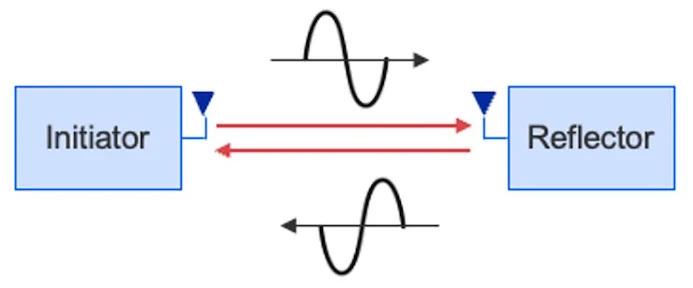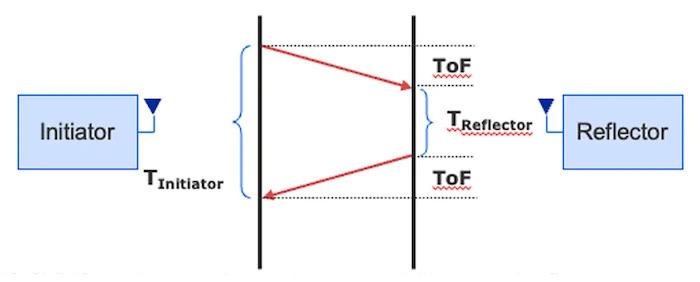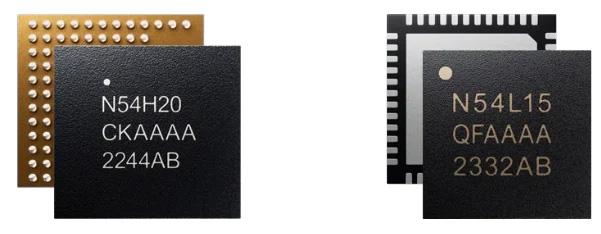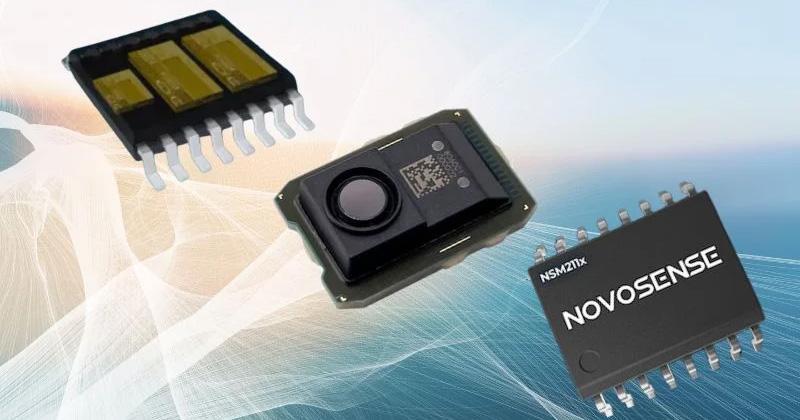
Bluetooth Can Now Measure Distance, With Hardware Support En Route
The Bluetooth Special Interest Group (SIG) has announced Bluetooth channel sounding for accurate distance measurement between compatible Bluetooth devices. Silicon Labs and Nordic Semiconductor simultaneously announced hardware support for the specification. Channel sounding is a part of the newly adopted Bluetooth 6.0 specification.

Bluetooth channel sounding has applications across homes, businesses, and factories. Image used courtesy of Silicon Labs
Bluetooth low energy (BLE) supports a certain range and device detection starting with specification version 5.4. The previous BLE ranging solution, however, has limited range accuracy. The new 6.0 version comes with significantly greater precision, enhanced flexibility, and stronger security.
All About Circuits last covered this subject in February before the final acceptance of the 6.0 specification. Since then, the Bluetooth SIG and industry partners have finalized and accepted the specification and started developing supporting hardware.
How Bluetooth Channel Sounding Works
Channel sounding is a new protocol stack for Bluetooth 6.0 hardware. The protocol relies on two methods to deliver higher accuracy and greater reliability than was previously possible. The primary ranging system uses phase-based ranging (PBR). The secondary ranging method called round trip time (RTT) is an optional add-in to improve accuracy and reliability.
PBR captures the change in phase in a reflected carrier wave. BLE operates at 2.4 GHz, which (calculates at 1/f) to 12.5 cm (4.92”) wavelength distance. The device initiating the inquiry (the initiator) transmits information about the signal phase and amplitude through amplitude shift keying (ASK). The receiving device, referred to as the reflector, sends the signal back to the initiator, which determines the phase change and amplitude. It then translates the difference into distance based on the phase difference related to the 12.5-cm wavelength.

Phase-based ranging comparing the change in phase between transmitted and received signals. Image used courtesy of Silicon Labs
RTT is the less complex of the two methods. It simply needs to measure the time between transmit and receive. Time of flight (TOF) is half that time, with fewer processing-related delays in the reflection system (Treflector). Flight time is difficult to manipulate, adding to its security. The primary disadvantage of RTT is the very small time values involved. If the clock speed is not high enough, the accuracy of the TOF result will be imprecise.

RTT distance calculation. Image used courtesy of Silicon Labs
Both BLE 6.0 methods are highly secure. In addition to its multi-layer security measures, the BLE protocol has physical properties from two distinct methods rather than just digital data, making the ranging system inherently more difficult to manipulate for nefarious purposes.
Silicon Labs Jumps on the Channel-Sounding Bus
Silicon Labs will be adding Bluetooth 6.0 channel sounding to its xG24 platform. The xG24 radio board and Pro kit allow designers to develop prototype channel-sounding solutions. An additional xG24 development kit with a dual antenna design will be available in December.
The Pro kit comprises a mainboard based on Silicon Labs' EFR32xG24 2.4 GHz +10 dBm wireless SoC. The board receives daughter cards for specific wireless protocol support (two are included) and has multiple antenna options. The set has an SDK, sample code, and the “Simplicity Studio” software development platform.
Nordic Adds Channel Sounding to nRF SoC Line
Nordic announced that Bluetooth 6.0 Channel Sounding is forthcoming in its nRF54L and nRF54H series SoC parts. The nRF54H/L chips enable ranging based on PBR, RTT, or both simultaneously. The chips support single antenna devices for the lowest cost and simplicity and multiple antenna installations for greater precision.

Nordic nRF54 series SoC with channel sounding. Image used courtesy of Nordic Semiconductor
What's in Store for Bluetooth With Ranging Support?
BLE is used in a wide variety of small personal devices. It is ubiquitous in smartphones and is replacing proprietary older radio standards in an increasing number of IoT and mobile devices. Common applications include key fobs/door locks, garage door openers, home/office automation, and localized sensor monitoring.
In industrial and commercial applications, Bluetooth ranging can improve asset tracking, warehouse operations, and data monitoring. With lower cost and lower power solutions, as will be available with Bluetooth 6.0, more sensors can be deployed for the same cost as a smaller number of older Bluetooth sensors.
With multiple fixed devices, Bluetooth 6.0 channel sounding can also be used to triangulate the position of a mobile device such as a household robotic vacuum cleaner. This capability will open up new home security and automation applications and improve products that currently use non-standard or less efficient older protocols.




